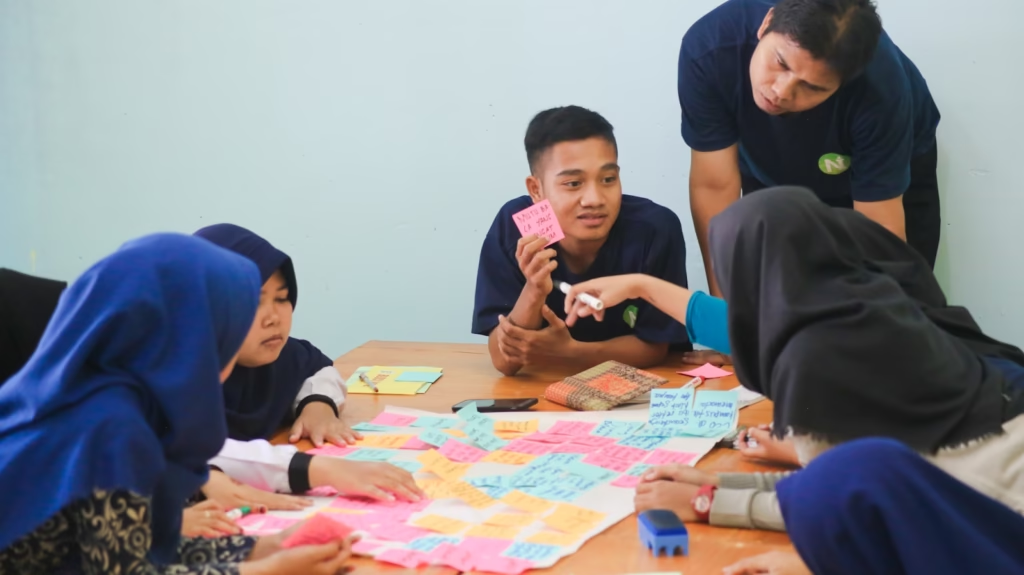The Daily Academic Tightrope Teachers Walk You Didn’t Know About. Ask anyone outside the classroom what teachers do, and they’ll likely say, “They teach kids.” Sounds simple, right?
But every elementary teacher knows: teaching is never just teaching.
Every lesson is a high-wire act — balancing comprehension, engagement, pacing, and 25 wildly different learners. Here’s a look at the daily academic tightrope we walk, and why most people would panic just thinking about it.
1. 🌀 Explaining the Same Concept 5 Different Ways: The Daily Academic Tightrope Teachers Walk You Didn’t Know About
Not every child learns the same way. Some need visuals; Some need repetition; Some need movement; Some need quiet, one-on-one instruction.

So when you plan a lesson, you’re not planning one explanation — you’re planning five, just in case.
What it feels like: Teaching nouns using a dance move, a story, a diagram, a chant, and a puppet — all in one day.
Bonus challenge? You’re still expected to stick to the pacing guide.
2. ⚖️ Teaching Kids at Wildly Different Academic Levels — Simultaneously

In any given classroom, you’ll find:
- One student reading two grade levels ahead
- One just learning to decode
- One who’s an English language learner
- One with a learning disability
- One who zones out unless you sing directions
And they’re all expected to reach the same standards.
So you differentiate — small groups, learning centers, leveled texts, scaffolded questions — all while keeping the class moving together.
The real skill: Making each student feel like you made the lesson just for them… even if you had to modify it six ways.
3. 🧠 Creating Engaging Lessons with Limited Resources
Engagement isn’t optional. If students aren’t interested, they tune out — fast. But with tight budgets, minimal prep time, and a copy quota, how do you keep 25 kids locked in?
You improvise; You borrow; You make it fun.
- You turn math into a scavenger hunt.
- You teach grammar with games.
- You make the water cycle into a skit.

What people see: a fun activity.
What they miss: the 2 hours you spent prepping with markers, glue sticks, and your own money.
4. 😒 Motivating Kids Who Don’t Want to Learn: The Daily Academic Tightrope Teachers Walk You Didn’t Know About

Let’s face it — not every student comes into your room excited to learn about adjectives or long division. Some are tired; Some are bored; Some have tough things going on at home.
Part of your job becomes convincing them that learning matters. Not with lectures — with curiosity, connection, and creativity.
Every day: You’re part educator, part motivational coach.
And when a student who “hates reading” finishes a chapter book for the first time? It’s all worth it.
5. ⏳ Giving Individualized Support Without Losing the Group

You know which students need help. You want to support them all. But when you stop to help one child, you risk losing the focus of the other 24.
So you constantly juggle:
- Who needs prompting now?
- Who’s about to give up?
- Who’s working quietly but needs to be challenged?
All while staying on schedule.
This is the real teaching tightrope: Supporting individuals while managing the collective.
🎯 Final Thoughts: The Real Work Behind “Just Teaching
When people say, “I could never do what you do,” this is probably what they mean — even if they don’t realize it.
Because the hardest part of teaching isn’t the content. It’s reaching every learner in the room with limited time, energy, and support.
So the next time someone says, “You’re just a teacher,” remember this:
You’re not just a teacher. You’re an academic strategist, performance artist, and learning architect. All in one.
💬 Teachers: How Do You Walk the Academic Tightrope?
Comment with your go-to strategies for differentiation or tell us about a lesson that finally clicked for your students.
Next up in the series: [The Emotional Labor No One Sees →]